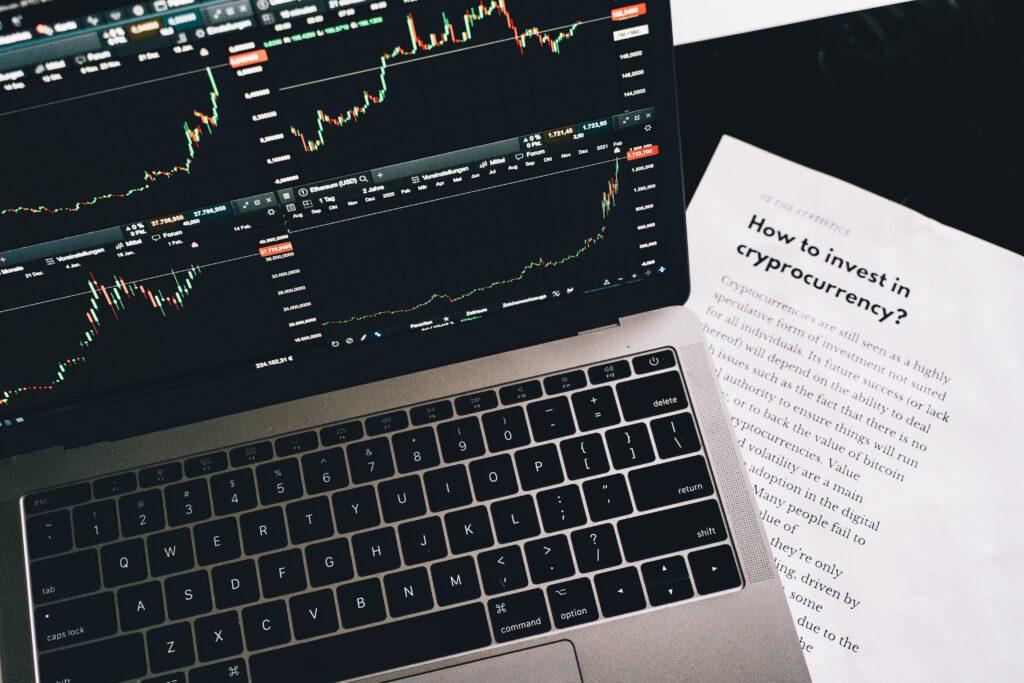
KGV, KBV, KUV – Der Kennzahlenwahnsinn
Inhalt Puh, Börse ist doch nicht „e wie einfach“ Das KGV, KBV, KUV und wie die ganzen Kennzahlen heißen, ist für jeden Börsenneuling
An important financial term that every investor should be familiar with is the bull market. Stock prices usually rise and fall, but when they rise continuously over a long period of time, it is called a bull market. The bull market is not strictly defined to a specific percentage increase. A bear market, on the other hand, is when stock prices fall 20% or more from their last peak. The longest bull market in history, was the bull market from early 2009 to 2020.

A bull market is a prolonged rise in stock prices. There is no formal benchmark or definition, such as a percentage. However, a rule of thumb often used by analysts and investors states that a bull market exists when share prices rise by 20% from their last low. Another definition says that a bull market exists when stocks rise more than 20% in a two-month period. Another definition states that the period between two bear markets is always a bull market.
The term is often used in reference to an index, such as the Dow Jones Industrial Averages (DJIA), the Nasdaq Composite Index, or the S&P 500 Index for stocks. However, a bull market can also occur in other asset classes or asset classes, for example, bonds, currencies, commodities, gold or real estate.
A bull market usually lasts from several months to years. The average duration and the average percentage gain at the end of a period depend on the definition.
If we assume that the term is defined as the period between two bear markets, the average bull market lasts about 3.8 years. The longest period is about 11 years between the Great Recession and the start of the COVID-19 pandemic.
Other definitions lead to different time spans. For example, another explanation is that a bull market is the period between the lowest closing price reached after the stock market has fallen at least 20% and the next high. In this case, the average bull market for the S&P 500 Index is 8.9 years with an average cumulative return of 468%.

The bull market can generally be divided into four phases, once defined by Sir John Templeton as follows:
„Bull markets are born on pessimism, grown on scepticism, mature on optimism, and die on euphoria.”
Or in German:
„Bullenmärkte werden durch Pessimismus geboren, wachsen durch Skepsis, reifen durch Optimismus und sterben durch Euphorie“
This phase begins at the end of a bear market or correction. The economy is performing poorly and stocks have punished investors. However, valuations have fallen and dividend yields have risen, which represents an opportunity.
The market has probably ended its slide and could stagnate or even rise during this phase. But the vast majority of investors are still concerned and skeptical about economic growth. They doubt that sales and earnings will increase and fear further losses. As a result, volatility is likely to remain elevated.
Sentiment changes from negative to positive due to better economic data, positive corporate results and better news. Investors return to the market. Mutual funds and exchange-traded funds see positive inflows. Volatility declines, valuations begin to rise, while yields decline.
In this phase, share prices rise rapidly. Investors have the feeling that the economy and share prices can only go up. Many new entrants enter the market and drive share prices up even further. High valuations are justified by metrics such as visitor numbers, subscribers, and recurring revenue percentages, among others.

Bull markets are the opposite of bear markets. They are characterized by investor optimism and confidence in the economy and corporate earnings. Investors' expectations are generally met or exceeded every quarter. Consequently, demand for stocks is high. Shareholders often see rising prices, reevaluate their assumptions, and may buy shares.
In general, positive sentiment drives share prices upward; this prolonged rise in share prices is interrupted by periodic downward movements. Nevertheless, the trend is generally upward. Eventually, demand subsides and the market peaks, followed by a correction or bear market.
The reasons for a bull market vary. As a rule, however, gross domestic product (GDP) is rising and unemployment is low. Companies report rising revenues, net profits and cash flow. They usually reward shareholders with higher dividends and share buybacks. The result is increasing optimism and investor confidence, which boosts demand for shares.
By definition, bull markets are prolonged periods of rising share prices. Optimistic and confident investors buy shares, driving up share prices. Demand remains high due to good economic reports, rising revenues and profits, and low unemployment. On average, bull markets last longer than bear markets, and it is impossible to determine the beginning and end of a bull market. Therefore, it is advisable to stay invested with a long-term strategy rather than trying to time the market. One of these long-term strategies could be investing in dividend stocks, as they can often provide a stable passive income even in times of crisis. If you want to learn even more about the pros and cons of dividend stocks, check out here .
If you would like to discover more dividend stocks or ETFs, you are welcome to use our Dividend App. myDividends24 use. Here you get access to over 2000 stocks and ETFs and can even create a portfolio and add the stocks you want. Here you can find more details for this. Download now free of charge and test it for 7 days.

Inhalt Puh, Börse ist doch nicht „e wie einfach“ Das KGV, KBV, KUV und wie die ganzen Kennzahlen heißen, ist für jeden Börsenneuling

Inhalt ist eine Anlagestrategie, bei der Anleger Aktien von Unternehmen kaufen, die regelmäßige Dividendenzahlungen ausschütten. Das Ziel dieser Strategie ist es, ein regelmäßiges

Inhalt Viele Anleger fragen sich ständig, warum Aktien fallen, nachdem die Ergebnisberichte der Unternehmen veröffentlicht wurden, besonders, wenn die Entwicklung laut des Berichts
© 2023 mydividends24.de